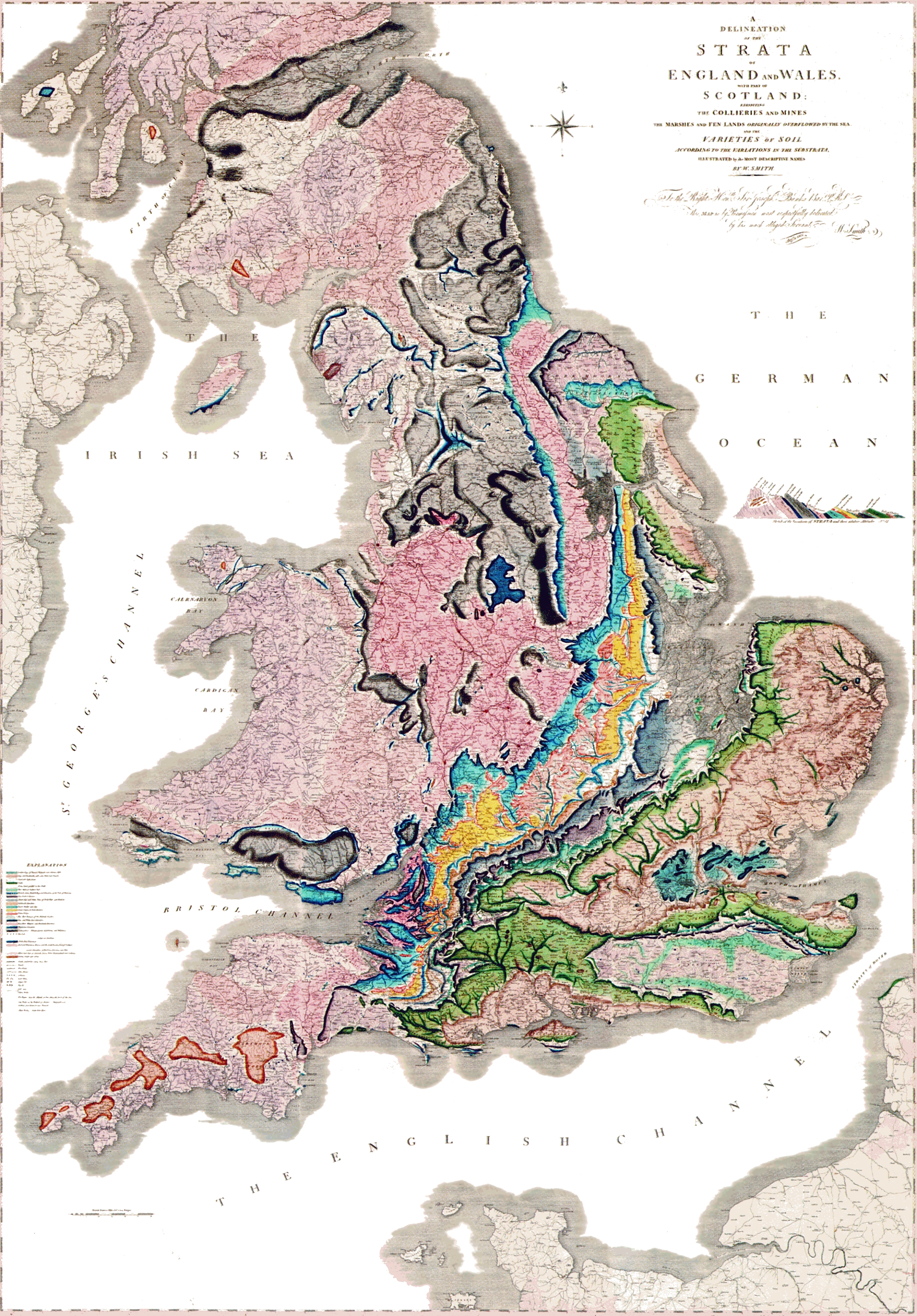This EarthCache is based on one of the spoil heaps of the nearby Ramsley Copper Mine. Although this particular site is not geological, it is archaeological, it illustrates a principle that governs both of these disciplines. This is, as the title suggests, is stratigraphy and its fundamental laws.
The term 'geology' was coined in 1603 by Ulisse Aldrovandi, an Italian naturalist, and derives from the Greek ge, meaning "earth" and lagos meaning "study of". The next major break through in the study of geology came in 1669 by Nicholas Steno, and still forms the foundation of the understanding of stratigraphy today. His laws of stratigraphy are as follows:
Law of Superposition
When rocks and sediments are formed the youngest will always be on the top, with the layers getting progressively older with depth, with the oldest on the bottom.

Law of Original horizontality
The layers of sediments laid down that eventually form sedimentary rocks are always laid down horizontally (flat). In occasions, such as Stairway Hole - Lulworth Cove, where they now occur twisted or tilted this is because of later forces acting on the strata.

Law of Cross-cutting relationships
Where rock types have been lain down under normal conditions, and following the previous laws, in the occurrence of an intrusion that disturbs both of the layers the intrusion must be younger than both of the layers.

Law of Lateral Continuity
Layers of rock are continuous until they encounter either solid bodies that block their deposition or until they are acted upon by agents that appeared after their deposition took place.

These laws of stratigraphy were revolutionary in the newly formed field of geology and have laid the foundation for much of the resulting research. The work undertaken by William 'Strata' Smith in England both built and relied on this work by Steno. His work culminated in the first ever true geological map, see below. He achieved this by studying the stratigraphy and using the fossil records within each rock type to identify the precise type of rocks of the same type. For example he knew that limestone with different fossil compositions were different rock types, despite their similarity in appearance. He used his extensive knowledge to not only recognise rock type and the sequence of the strata, but to predict them. This work was only made possible by the law of superposition and the other laws of stratigraphy proposed by Steno.

At sites that show multiple layers of rock, or sediment, by using Steno's law of superposition it is possible to create a simple timeline of the deposition of each rocks or sediments. This principle is also used in archaeology to relatively date layers laid down by human activity in exactly the same way. The oldest layers of human activity will always be below the younger layers. At Ramsley Mine the spoil heap provides a brilliant archaeological example of clear layering in much the same way as happens in geologic processes of deposition. The posted coordinates will take you to below the spoil heaps, which are located on the steep sides of the hill the mine is located on. From there you will a number of distinct layers of deposition.
NB
Do not climb up to the exposed face as the spoil heaps are liable to rock falls, as can be see by the scree below.
To log this EarthCache go to the posted coordinates, look at the exposed layers in the spoil heap and send me a message or email answering these following questions
1) What angle are the layers laid down at?
2) Estimate the widest layer you can see.
3) Describe the pattern of particle size (just relative to each other rather than absolute) between the layers. For example do the sizes alternate between the layers, get gradually larger/smaller or they are all uniform in size.
The final two questions can be answered using the law of superposition and your answers to the questions above. For question 5 make the assumption that the mine is only ever worked in a downwards direction and that only one area/lode is being worked at any one time.
4) Given the stratigraphy of the spoil heaps describe the progression of relative age of the layers from left to right based solely on how they were laid by the mining activity.
5) Using the assumptions outlined above, describe the relative stratigraphic age of the layers from left to right based solely on their geological age, and does this progression match the man made one?